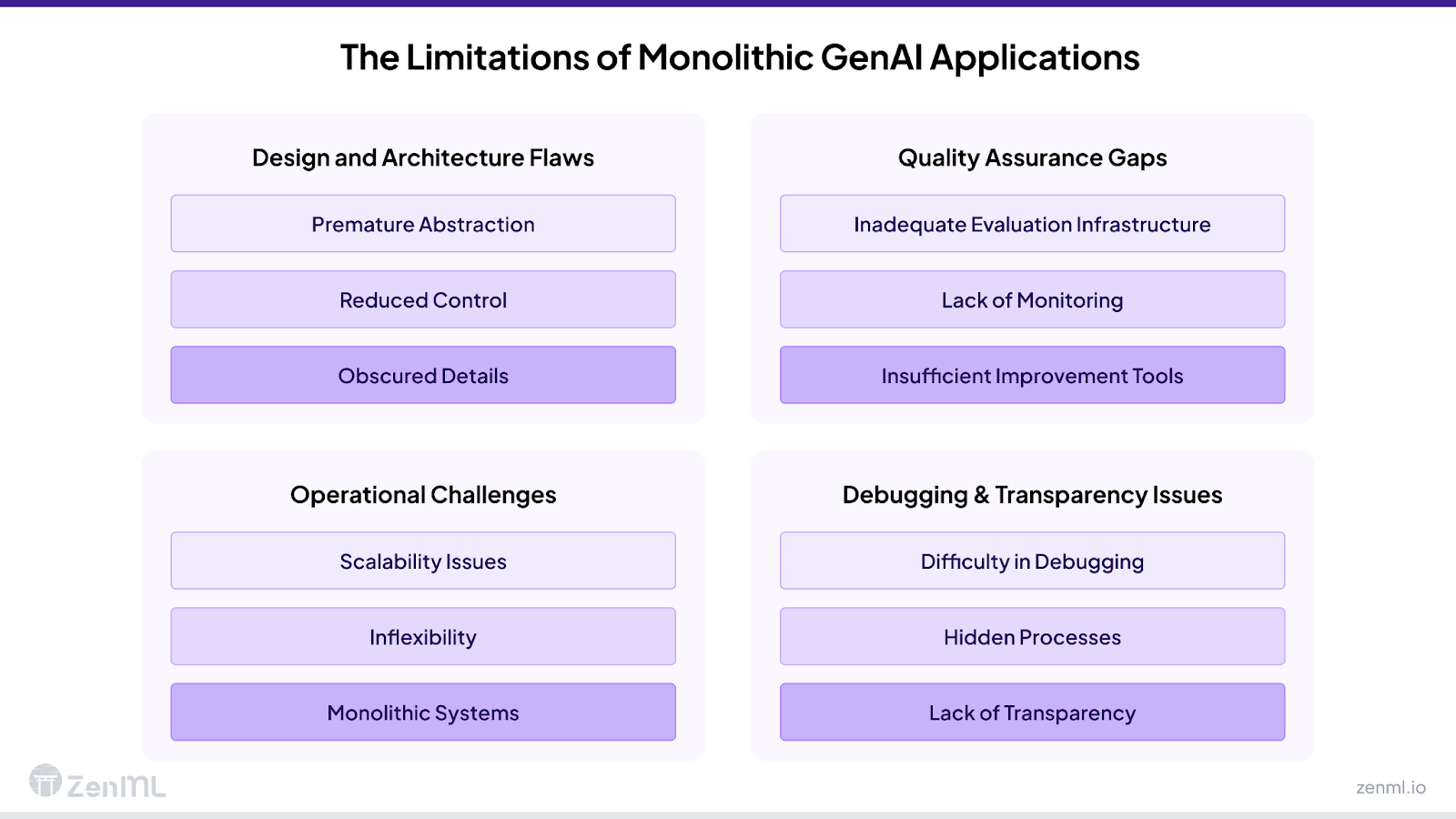
From GenAI Demos to Production: The Importance of Structured Workflows
Introduction
Generative AI (GenAI) has showcased remarkable capabilities at technology conferences and on social media, such as composing marketing emails, creating data visualizations, and writing functioning code. However, the reality of deploying these systems in production environments is often starkly different. While 53% of AI projects move from prototype to production, only 10% achieve measurable return on investment (ROI). This gap exists because the controlled environments of demonstrations do not adequately reflect the complexities of real-world deployment.
Challenges in Production Deployment
Many GenAI applications currently proceed based on informal assessments rather than rigorous validations. Developers may review outputs and deem them acceptable, but this approach often overlooks subtle inconsistencies that can emerge under real-world conditions. When AI systems influence critical business decisions, the stakes are high; errors can lead to misallocated resources, lost sales, and potential legal liabilities.
Case Study: Legal Implications
A notable incident occurred when an attorney submitted fabricated court cases generated by ChatGPT, which resulted in sanctions. Such examples underscore the necessity for robust validation mechanisms in AI systems.
Limitations of Current GenAI Architectures
First-generation GenAI applications typically follow a monolithic architecture, where a single user input is processed into an output. This simplicity becomes a limitation in production, as identifying the source of errors becomes difficult. For instance, a food distribution platform found that a single prompt that worked during a hackathon failed to scale in production.
Probabilistic Nature of Language Models
Language models can produce varying outputs even with the same input, creating a tension between the creativity these models offer and the consistency required in business processes. Organizations have found that these monolithic designs hinder scalability and adaptability when facing real-world data complexities.
Component-Driven GenAI: A Solution
Transitioning to a component-driven architecture allows organizations to break down complex systems into manageable units, transforming opaque processes into transparent workflows. This architecture divides systems into specific components, each responsible for a distinct function:
- Data Retrieval Component: Utilizes a vector database to find relevant documents based on user queries.
- Prompt Construction Component: Formats retrieved information and user input into optimized prompts.
- Model Interaction Component: Manages communication with language models and standardizes input/output formats.
- Output Validation Component: Checks outputs for accuracy and harmful content.
- Response Processing Component: Restructures raw model output into usable formats.
Benefits of Component-Based Systems
Implementing a component-driven approach has several advantages:
- Separation of concerns allows developers to focus on specific functionalities.
- Discrete evaluation points enable validation against defined criteria.
- Improved system behavior understanding through manageable units.
Case Study: Uber’s Approach
Uber’s automated mobile app testing system exemplifies these benefits. Its architecture separates concerns into functional areas, achieving stability and requiring no maintenance even when app changes occurred.
Component-Evaluation Pair: A Key Pattern
Each component should have a corresponding evaluation mechanism to verify its behavior. This creates a foundation for both initial validation and ongoing quality assurance. Real-world implementations, such as travel itinerary generators and customer support AI, have successfully employed this pattern to quickly identify performance issues.
Eval-First Development Methodology
Eval-first development emphasizes establishing evaluation criteria before building components. This methodology operates on multiple levels:
- Component Level: Verifies individual units perform their tasks correctly.
- Step Level: Assesses how components interact in sequence.
- Workflow Level: Validates the entire system against business requirements.
This layered approach allows for comprehensive performance insights and supports incremental improvements.
Implementing Component-Based GenAI Workflows
Effective implementation begins with identifying core functions and establishing clear responsibilities for each component. Organizations should consider existing infrastructure and MLOps capabilities, which can be adapted for GenAI systems, enhancing efficiency and governance.
Building for the Future
Component-based workflows position organizations to adapt to emerging technologies without complete system overhauls. As generative AI continues to evolve, this adaptability will be crucial for maintaining a competitive edge.
Conclusion
The transition from impressive GenAI demonstrations to reliable production systems requires both a robust technical architecture and organizational commitment. By investing in component design, interface definitions, and systematic evaluations, organizations can create dependable systems that support significant business decisions. This approach not only enhances operational efficiency but also fosters trust and accountability in AI applications, ultimately leading to sustainable development and long-term success.
























